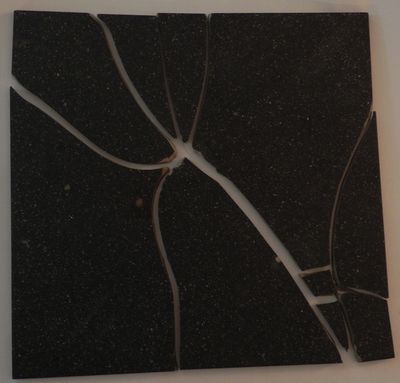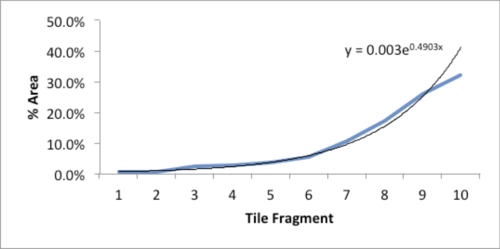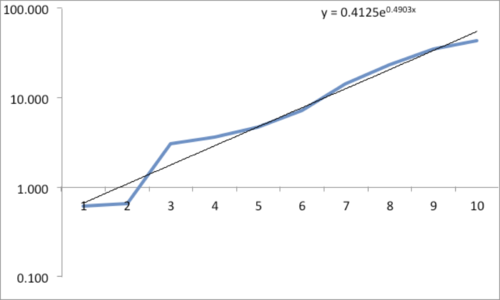Sandbox: Difference between revisions
| Line 60: | Line 60: | ||
[http://www.slate.com/articles/health_and_science/science/2017/07/de_blasio_s_team_consistently_misreads_the_stats_when_broadcasting_victories.html De Blasio wants to dramatically reduce NYC’s rat population. Don’t hold your breath.]<br> | [http://www.slate.com/articles/health_and_science/science/2017/07/de_blasio_s_team_consistently_misreads_the_stats_when_broadcasting_victories.html De Blasio wants to dramatically reduce NYC’s rat population. Don’t hold your breath.]<br> | ||
by Jonathan Auerbach, ''Slate'', 21 July 2017 | by Jonathan Auerbach, ''Slate'', 21 July 2017 | ||
[http://www.socialresearchmethods.net/kb/regrmean.php Regression to the mean] | |||
==Diet science== | ==Diet science== | ||
Revision as of 17:41, 25 July 2017
Forsooth
COLONEL [Buzz] ALDRIN: Infinity and beyond. (Laughter.)
THE PRESIDENT: This is infinity here. It could be infinity. We don’t really don’t know. But it could be. It has to be something -- but it could be infinity, right?
Okay. (Applause.)
Office of the White House Press Secretary, 30 June 2017.
Suggested by Mike Olinick
Quotations
“We know that people tend to overestimate the frequency of well-publicized, spectacular events compared with more commonplace ones; this is a well-understood phenomenon in the literature of risk assessment and leads to the truism that when statistics plays folklore, folklore always wins in a rout.”
In progress
Lies, Damned Lies And Statistics: How Bad Statistics Are Feeding Fake News
by Kalev Leetaru, Forbes, "Big Data" blog, 2 February 2017
Statistical errors are often not due to mathematical errors
by Brian Zaharatos, letter to the editor, Chronicle of Higher Education, 11 July 2017
Charting Literary Greatness With Jane Austen
by Kathleen A. Flynn, New York Times "Times Insider", 15 July 2017
To reduce words to data points is not to diminish the power of choosing the right ones and putting them in the right order; there’s magic in fiction’s ability to explore universal human truths. But a discipline like statistics can offer a new and amusing — even instructive — look at something as intuitive and artistic as a novel, and that’s exciting, too.
Jeff Sessions used our research to claim that sanctuary cities have more crime. He’s wrong.
by Loren Collingwood and Benjamin Gonzalez-O'Brien, Washington Post, "Monkey Cage" blog, 14 July 2017
Sally Hernandez says cities labeled as sanctuaries have less crime, according to FBI statistics
by W. Gardner Selby, Politifact, 10 May 2017
Half-True Hernandez "FBI crime statistics have found that labeled ‘sanctuary’ cities experience lower rates of all crime types, including homicides."
— Sally Hernandez on Tuesday, April 18th, 2017 in an oped commentary co-authored by four other Texas sheriffs Sally Hernandez says cities labeled as sanctuaries have less crime, according to FBI statistics
This anti-voter-fraud program gets it wrong over 99 percent of the time. The GOP wants to take it nationwide.
by Christopher Ingraham, Washington Post "Wonkblog", 20 July 2017
One person, one vote: estimating the prevalence of double voting in U.S. presidential elections
De Blasio wants to dramatically reduce NYC’s rat population. Don’t hold your breath.
by Jonathan Auerbach, Slate, 21 July 2017
Diet science
Are fats unhealthy? The battle over dietary guidelines
by Aaron E. Carroll, “Upshot” blog, New York Times, 12 October 2015.
Related “Upshot”: Behind new dietary guidelines, better science, February 23, 2015
Chance of gun death
Some math doodles
<math>P \left({A_1 \cup A_2}\right) = P\left({A_1}\right) + P\left({A_2}\right) -P \left({A_1 \cap A_2}\right)</math>
<math>P(E) = {n \choose k} p^k (1-p)^{ n-k}</math>
<math>\hat{p}(H|H)</math>
<math>\hat{p}(H|HH)</math>
Accidental insights
My collective understanding of Power Laws would fit beneath the shallow end of the long tail. Curiosity, however, easily fills the fat end. I long have been intrigued by the concept and the surprisingly common appearance of power laws in varied natural, social and organizational dynamics. But, am I just seeing a statistical novelty or is there meaning and utility in Power Law relationships? Here’s a case in point.
While carrying a pair of 10 lb. hand weights one, by chance, slipped from my grasp and fell onto a piece of ceramic tile I had left on the carpeted floor. The fractured tile was inconsequential, meant for the trash.

As I stared, slightly annoyed, at the mess, a favorite maxim of the Greek philosopher, Epictetus, came to mind: “On the occasion of every accident that befalls you, turn to yourself and ask what power you have to put it to use.” Could this array of large and small polygons form a Power Law? With curiosity piqued, I collected all the fragments and measured the area of each piece.
| Piece | Sq. Inches | % of Total |
|---|---|---|
| 1 | 43.25 | 31.9% |
| 2 | 35.25 | 26.0% |
| 3 | 23.25 | 17.2% |
| 4 | 14.10 | 10.4% |
| 5 | 7.10 | 5.2% |
| 6 | 4.70 | 3.5% |
| 7 | 3.60 | 2.7% |
| 8 | 3.03 | 2.2% |
| 9 | 0.66 | 0.5% |
| 10 | 0.61 | 0.5% |

The data and plot look like a Power Law distribution. The first plot is an exponential fit of percent total area. The second plot is same data on a log normal format. Clue: Ok, data fits a straight line. I found myself again in the shallow end of the knowledge curve. Does the data reflect a Power Law or something else, and if it does what does it reflect? What insights can I gain from this accident? Favorite maxims of Epictetus and Pasteur echoed in my head: “On the occasion of every accident that befalls you, remember to turn to yourself and inquire what power you have to turn it to use” and “Chance favors only the prepared mind.”

My “prepared” mind searched for answers, leading me down varied learning paths. Tapping the power of networks, I dropped a note to Chance News editor Bill Peterson. His quick web search surfaced a story from Nature News on research by Hans Herrmann, et. al. Shattered eggs reveal secrets of explosions. As described there, researchers have found power-law relationships for the fragments produced by shattering a pane of glass or breaking a solid object, such as a stone. Seems there is a science underpinning how things break and explode; potentially useful in Forensic reconstructions. Bill also provided a link to a vignette from CRAN describing a maximum likelihood procedure for fitting a Power Law relationship. I am now learning my way through that.
Submitted by William Montante